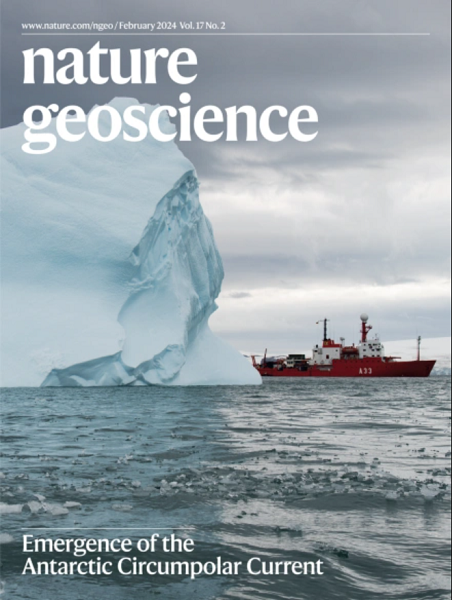微流星体撞击时土星环颗粒的抗污染能力
IF 15.7
1区 地球科学
Q1 GEOSCIENCES, MULTIDISCIPLINARY
引用次数: 0
摘要
根据非冰冻微流星体的轰击使土星环逐渐变暗的假设,土星环的年龄被估计为大约 1 到 4 亿岁,而卡西尼号的观测结果表明土星环的颗粒似乎相对干净。这些年轻的年龄估计假定星环是由纯水冰颗粒形成的,非冰微流星物质的撞击增殖效率很高(η ≳10%)。在这里,我们利用超高速微流星体撞击环状粒子的数值模拟结果表明,非冰物质可能不像以前认为的那样容易吸积。我们发现,非冰质撞击物在与星环颗粒发生高能碰撞时会完全汽化和膨胀,形成带电的纳米颗粒和离子,随后通过与土星碰撞、重力逃逸或电磁拖曳进入土星大气层而从星环中移除。尽管我们的模型假定没有孔隙度、强度或星环颗粒的粒度,存在不确定性,但我们认为在微流星体撞击之后,非冰物质的吸积将达到最小程度。这种抗污染机制意味着吸积效率很低(η ≲1%)。因此,我们认为土星环表面上的年轻可能是由于抗污染造成的,而不是表明其形成年龄较小。本文章由计算机程序翻译,如有差异,请以英文原文为准。


Pollution resistance of Saturn’s ring particles during micrometeoroid impact
Saturn’s rings have been estimated to be as young as about 100 to 400 million years old according to the hypothesis that non-icy micrometeoroid bombardment acts to darken the rings over time and the Cassini observation indicated that the ring particles appear to be relatively clean. These young age estimates assume that the rings formed out of pure water ice particles with a high accretion efficiency of impacting non-icy micrometeoroid material (η ≳ 10%). Here we show, using numerical simulations of hypervelocity micrometeoroid impacts on a ring particle, that non-icy material may not be as readily accreted as previously thought. We found that the complete vaporization and expansion of non-icy impactor material on energetic collision with a ring particle leads to the formation of charged nanoparticles and ions that are subsequently removed from the rings through collision with Saturn, gravitational escape or electromagnetic drag into Saturn’s atmosphere. Despite uncertainties in our models that assume no porosity, strength or ring particle granularity, we suggest minimal accretion of non-icy materials would occur following micrometeoroid impact. This pollution resistance mechanism implies a low accretion efficiency (η ≲ 1%). Thus we suggest that the apparent youth of Saturn’s rings could be due to pollution resistance, rather than indicative of young formation age. Simulations of micrometeoroid impacts into Saturn’s icy ring particles find limited pollution of the particles by non-icy material, suggesting Saturn’s rings may appear younger than their actual age.
求助全文
通过发布文献求助,成功后即可免费获取论文全文。
去求助
来源期刊

Nature Geoscience
地学-地球科学综合
CiteScore
26.70
自引率
1.60%
发文量
187
审稿时长
3.3 months
期刊介绍:
Nature Geoscience is a monthly interdisciplinary journal that gathers top-tier research spanning Earth Sciences and related fields.
The journal covers all geoscience disciplines, including fieldwork, modeling, and theoretical studies.
Topics include atmospheric science, biogeochemistry, climate science, geobiology, geochemistry, geoinformatics, remote sensing, geology, geomagnetism, paleomagnetism, geomorphology, geophysics, glaciology, hydrology, limnology, mineralogy, oceanography, paleontology, paleoclimatology, paleoceanography, petrology, planetary science, seismology, space physics, tectonics, and volcanology.
Nature Geoscience upholds its commitment to publishing significant, high-quality Earth Sciences research through fair, rapid, and rigorous peer review, overseen by a team of full-time professional editors.
 求助内容:
求助内容: 应助结果提醒方式:
应助结果提醒方式:


